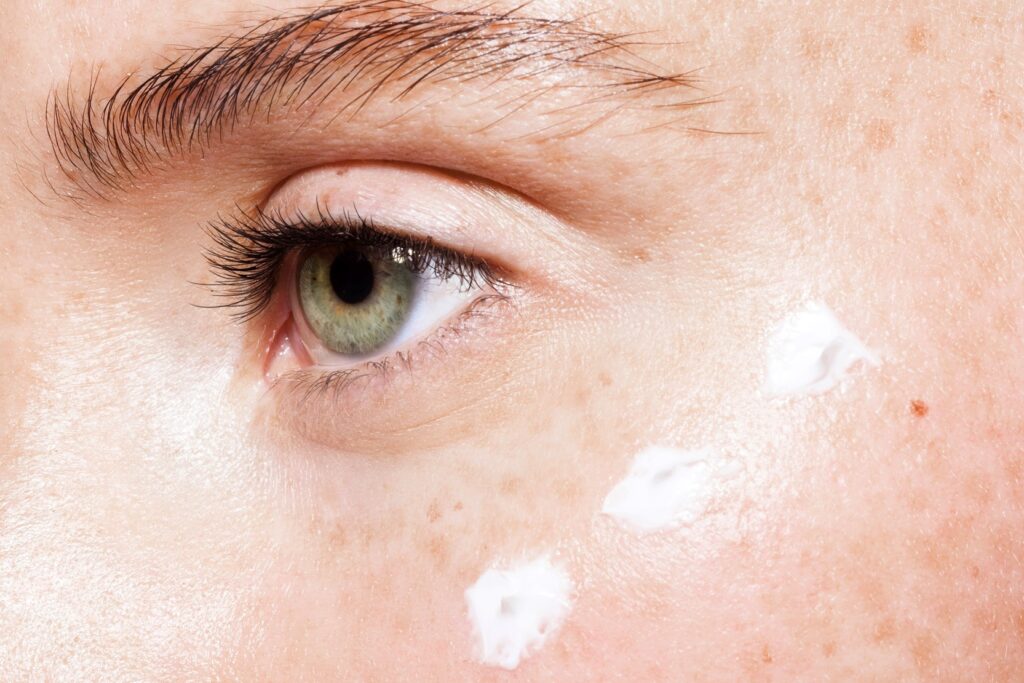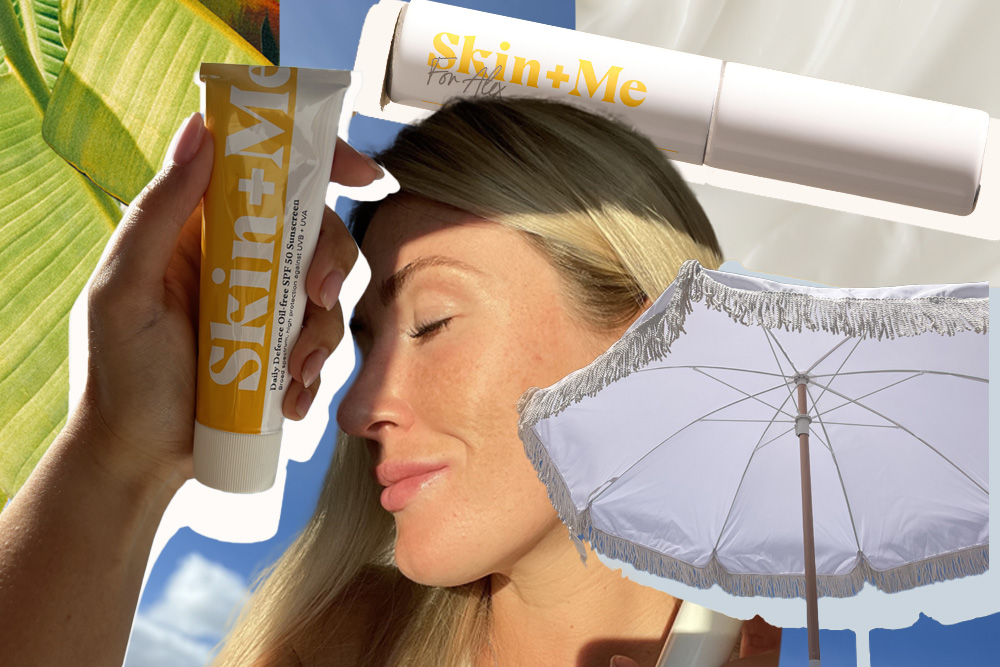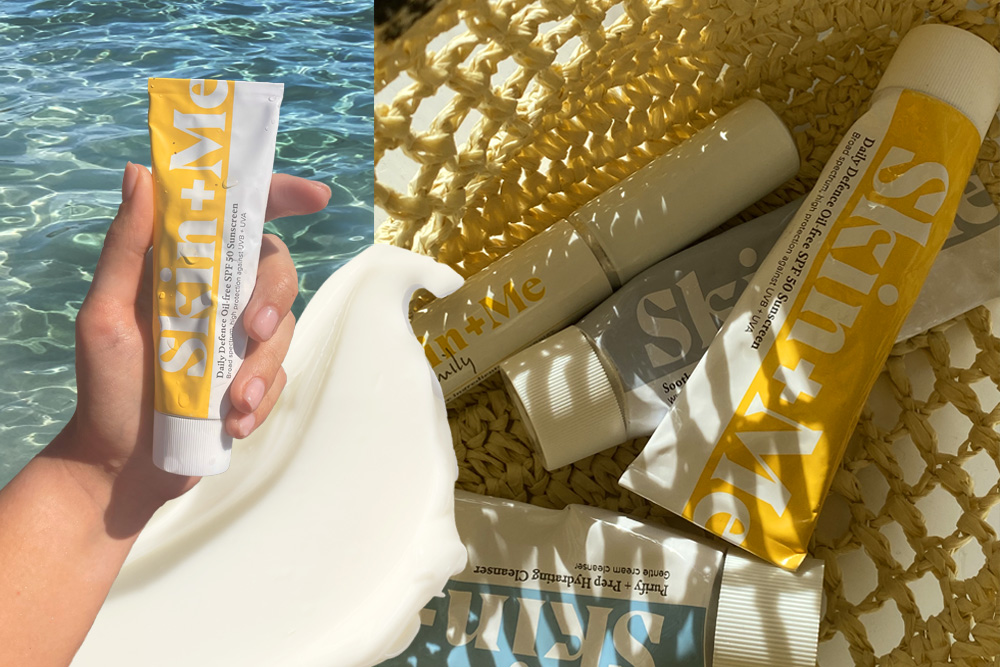Melasma 101

Link to share article here:
Everything You Need To Know About Oily Skin
There’s a distinct difference between skin that glows with health and skin that shines with excess oil. Knowing that difference is your basic definition of oily skin.
If your skin type is on the oily side then the chances are you’ll be familiar with blotting unwanted shine away not long again after your morning cleanse. And whilst some may find oily skin’s propensity towards acne, blackheads and breakouts a challenge, rest assured that oily skin types – if protected properly – suffer less with signs of premature ageing. Excess oil (or sebum) production slows as we age too so you may well settle on a combination skin in the future.
Caring for oily skin in the here and now though, takes a bit of advice from experts, the right active ingredients and knowledge of what to avoid. Don’t be fooled, oily skin may sometimes feel ‘tougher’ than dry or sensitive skin but skin barrier protection and SPF are universal must-haves, no matter your skin type.
We asked Consultant Dermatologist, Dr Malvina Cunningham for her take on how best to identify causes, symptoms and treatments to find a (slightly less) shiny, happy balance when it comes to oily skin.
Skin + Me: What are the common signs and symptoms of an oily skin type?
Dr Malvina Cunningham: If you have an oily skin type you’ll notice that your face can get shiny as the day progresses. Your pores may be more visible and are more likely to suffer acne breakouts including blackheads, spots and blemishes.
When it comes to makeup, you’re likely no stranger to blotting sheets or mattifying powders. You might find that makeup and skincare products don’t always stay put for as long as you’d want them to.
Oily skin is the result of both genetic and hormonal factors which mean that your skin’s oil glands are predisposed to producing lots of natural oil (called sebum). The good news is that oily skin types tend to have younger-looking and more supple skin that will be less prone to fine lines and wrinkles. This is partly due to the natural oils moisturising the skin and fighting off free radical damage.
Skin + Me: Do you have any simple tips on how to care for oily skin?
Dr Malvina Cunningham: If you have oily skin, and you consult Skin + Me for a treatment plan, it’s likely that the personalised formulation in your Daily Doser will contain the active ingredient tretinoin. This is one of the most effective ingredients to tackle excess oil and associated issues.
Retinoids (such as tretinoin) minimise skin cells clogging the surface of the skin, thus reducing breakouts. At the same time, it stimulates collagen production which helps reduce the appearance of pores and sebum production. Tretinoin is a powerful ingredient that over time, will become your best friend especially if you are prone to oily skin.
“Tretinoin is a powerful ingredient which over time, will become your best friend especially if you are prone to oily skin.”
Whilst we generally let our active ingredients do most of the work, there are also some great tips and tricks to manage an oily complexion that can be helpful to achieve overall balanced skin.
Easy to carry and foolproof to use, blotting papers can be a useful defence against the appearance of excess shine using the day. Blot your T-zone whenever it feels shiny whilst still keeping any makeup intact.
As tempting as it is, avoid dipping into a standard pressed powder compact every time you see a hint of shine as layering makeup every few hours can lead to skin pilling, dull skin, blocked pores and general caking of product across your T-zone.
When it comes to your evening routine, clay masks can be an effective way to purify oily breakout-prone skin. Apply yours to the entire face once or twice a week.
What ingredients should I look out for if I have oily skin?
Cleanser
If you have an oily skin type, this is the one time that we recommend using active ingredients in your cleanser. Cleansers containing BHAs (and salicylic acid in particular) can be helpful as these are fat-soluble.
You may want to start by incorporating an active cleanser into your routine once-daily in the mornings when the skin is most oily and use a gentle non-foaming cleanser for your evening routine.
Most oily skin types are perfectly able to tolerate this but if you’re unsure or if you have a tendency towards sensitive skin, we recommend you wait until your skin has adjusted to your Daily Doser for up to four weeks before introducing any other active ingredients.
What to avoid? You may have noticed a recent trend for using oil-based cleansers to treat oily skin which we don’t think is needed. Your skin is likely oily enough and adding additional oil-based products just compounds the issue by further clogging up pores and leading to breakouts.
Moisturiser
Reassess the moisturising step in your routine and only use a very light moisturiser in the evening if you feel the need. If you have a tendency to have very oily skin it is perfectly fine to skip this step.
Once you’re using increasing concentrations of retinoid, the skin may become drier. In this case, a light non-comedogenic (non-pore clogging) moisturiser can either be used before or after your Daily Doser.
Sunscreen
It goes without saying that everyone needs daily SPF, no matter their skin type. But again, stripping back and targeting your skincare routine when you have oily skin is key.
Try to avoid moisturiser in the morning and only use a moisturising sunscreen or even a gel-based sunscreen after your cleansing step. Your skin will be more sun-sensitive and susceptible to sun damage especially if you’re using active ingredients such as retinoids.
Opt for lighter formulations to manage excess shine and keep pores clear. Heliocare and La Roche-Posey both stock great SPF options suited to oily skin types.
Medical facts checked by Consultant Dermatologist, Dr Malvina Cunningham.
New to Skin + Me? Get your first month of personalised skincare for £4.99 with promo code DOSE – complete our quick consultation here.
Looking for a routine refresh? Add the Dream Routine to your Skin + Me subscription.
In need of a restock? Head to The Skincare Shop for one-off purchases of your Routine Essentials.



